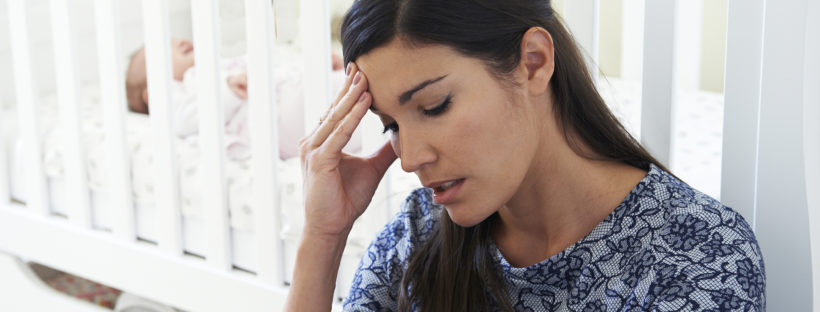by Tanya M. Shlosman
Pregnancy is a complicated journey full of a multitude of emotions. A pregnant woman has an abundant amount of advice and resources at her disposal, but it can be overwhelming to swim through the information and decide what to take to heart and what to take with a grain of salt.
I spent my first pregnancy worried about everything. With every blood test, every ache and pain, I quickly referenced my What to Expect When You’re Expecting book to calm my concerns. When I was diagnosed with preeclampsia and my son had to be delivered almost 4 weeks early due to dangerously high blood pressure, I remember feeling afraid and uninformed. Even after I was told I had preeclampsia, I never felt my doctors did a good job of explaining the condition.
If you don’t know, as I didn’t, preeclampsia is a serious disorder occurring when women develop high blood pressure, usually in the last months of pregnancy. Preeclampsia affects as many as 1 in 12 pregnancies and can progress rapidly, resulting in seizures in its most severe form, which is called eclampsia.
Some years later, when I was pregnant with my daughter, I felt prepared and confident that I knew what to expect and what to do to keep myself healthy. I had some challenging days but made it to 40 weeks with no signs of preeclampsia.
While I had a very difficult cesarean delivery, I was relieved that my 8 pound and 15 ounce baby girl was healthy! However, within a few hours of delivery, I began to feel very sick. No matter what I did, I could not catch my breath and a cough set in. Having to cough after surgery is not a pleasant experience but I thought I had just developed a cold and was not concerned.
I soon learned that it was more than a cold. I had developed postpartum preeclampsia and this caused extra fluid to build up in my lungs—a condition called pulmonary edema.
I was not only afraid but angry—angry that I was not told that preeclampsia could happen after giving birth. Postpartum preeclampsia is a rare condition, usually occurring within the first 48 hours after birth but it can occur as late as six weeks postpartum. I endured breathing treatments and was given blood pressure medication while in the hospital and after being sent home. While my trouble breathing was the most frightening symptom, I also had severe headaches, dizziness, and blurred vision. I stayed on blood pressure medicine for almost six months.
What makes preeclampsia so frightening is that there are no tests to determine who will be afflicted with the condition. And there is no known method for preventing preeclampsia, no matter when it occurs. But there are known risk factors. For example, women are at an increased risk to develop preeclampsia if they are obese, over age 40 or under 18, have a multiple gestation (twins or more), chronic high blood pressure or any kind of diabetes. Research shows that about twenty percent of women who had preeclampsia in a prior pregnancy will have it again with the next pregnancy. Pregnant women should talk with their nurse, midwife or doctor about preeclampsia and what their risks may be.
All pregnant and postpartum women should be aware of the symptoms of preeclampsia but especially women who have an increased risk to develop the condition. Symptoms are headache, excessive swelling, changes in vision, and upper abdominal pain. Women who have these symptoms should call their midwife or doctor right away. However, some women who develop preeclampsia will have few, if any, symptoms.
Every woman should reach out with concerns, no matter how small they may seem.
We need to talk about our experiences, support preeclampsia research and outreach to other women. I found a great source of information and comfort in the Preeclampsia Foundation, with its informational website and community forum.
May is National Preeclampsia Awareness Month and there is no better time to understand this condition and how it could affect you and your baby.
Some places you can start are Health4Mom.org and the Preeclampsia Foundation.
You can also see the 7 Symptoms Every Pregnant Woman Should Know videos in English and Spanish:
[youtube=http://youtu.be/P9GxHQzwIzk]
[youtube=http://youtu.be/UVjZItybNBI]
 Tanya earned her Bachelor’s Degree and did her master’s course work at the University of Louisiana at Monroe and work as an assistant director at a historical museum. She is a writer of non-fiction and poetry and currently working on a book discussing World War II. She is most importantly a wife and proud mother of two and several fur-babies.
Tanya earned her Bachelor’s Degree and did her master’s course work at the University of Louisiana at Monroe and work as an assistant director at a historical museum. She is a writer of non-fiction and poetry and currently working on a book discussing World War II. She is most importantly a wife and proud mother of two and several fur-babies.


Thank you for sharing! I like the addition of the YouTube video. It can be a great educational tool to be used with patients, both antepartum and post partum.
i don’t know how knowing preeclampsia or hypertension of pregnancy can occur after delivery would have been helpful to you. it sounds like yours occurred immediately after delivery, and was treated quickly. i am glad you are well now. and that you have a healthy baby. this syndrome, which is not well understood by anyone, its cause or reason for happening, is treated for symptoms only.
Reblogged this on Nesting Childbirth and commented:
Great article on the dangers that can happen after delivery.
New online tool to calculate preeclampsia and trisomy pregnancy screenings: http://prenatalscreeningcloud.com/